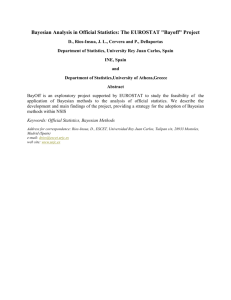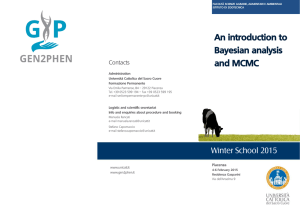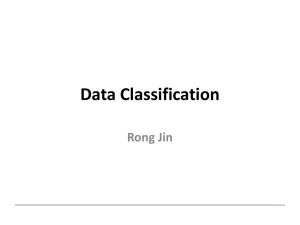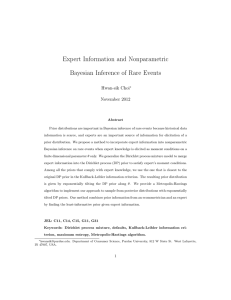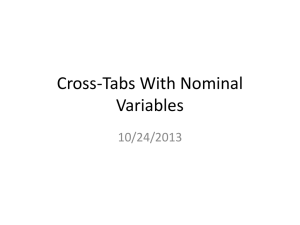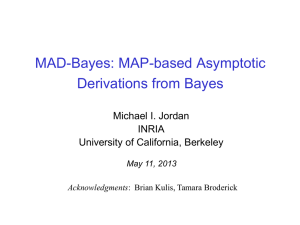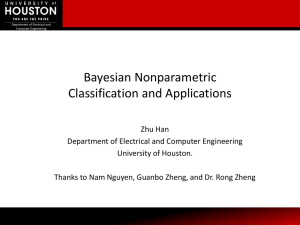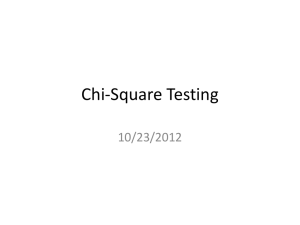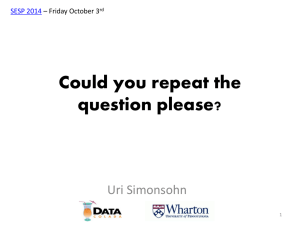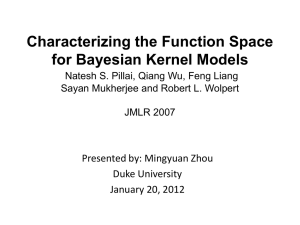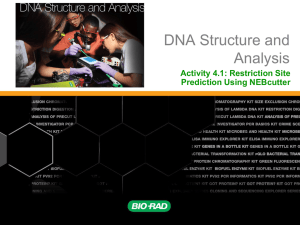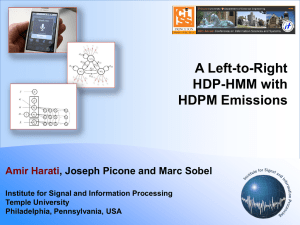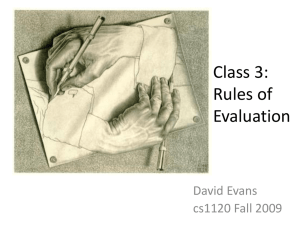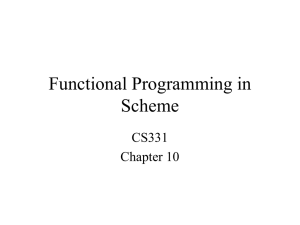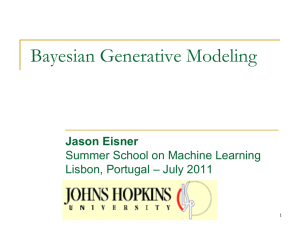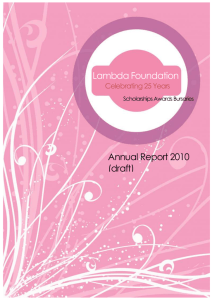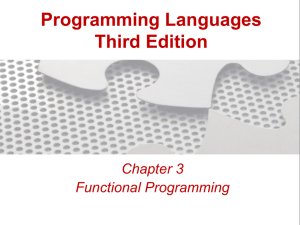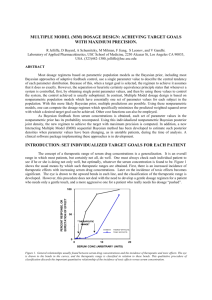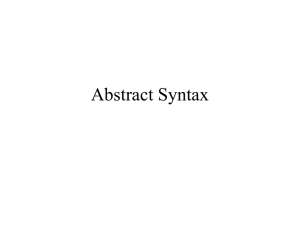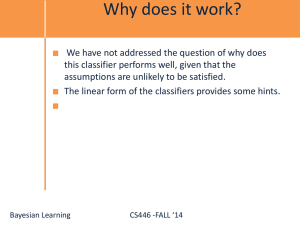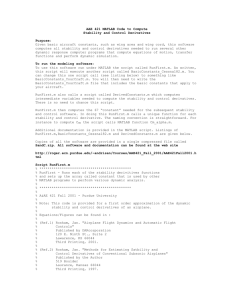bayesian_nonparametr..
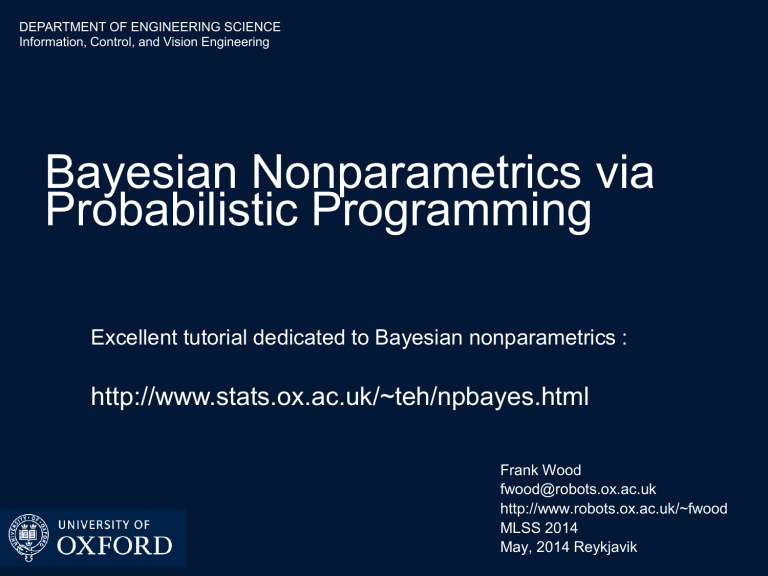
DEPARTMENT OF ENGINEERING SCIENCE
Information, Control, and Vision Engineering
Bayesian Nonparametrics via
Probabilistic Programming
Excellent tutorial dedicated to Bayesian nonparametrics : http://www.stats.ox.ac.uk/~teh/npbayes.html
Frank Wood fwood@robots.ox.ac.uk
http://www.robots.ox.ac.uk/~fwood
MLSS 2014
May, 2014 Reykjavik
Bayesian Nonparametrics
What is a Bayesian nonparametric model?
A Bayesian model reposed on an infinite-dimensional parameter space
What is a nonparametric model?
Model with an infinite dimensional parameter space
Parametric model where number of parameters grows with the data
Why are probabilistic programming languages natural for representing Bayesian nonparametric models?
Often lazy constructions exist for infinite dimensional objects
Only the parts that are needed are generated
Nonparametric Models Are Parametric
Nonparametric means “cannot be described as using a fixed set of parameters”
Nonparametric models have infinite parameter cardinality
Regularization still present
Structure
Prior
Programs with memoized thunks that wrap stochastic procedures are nonparametric
Dirichlet Process
A Bayesian nonparametric model building block
Appears in the infinite limit of finite mixture models
Formally defined as a distribution over measures
Today
One probabilistic programming representation
Stick breaking
Generalization of mem
Review : Finite Mixture Model
Dirichlet process mixture model arises as infinite class cardinality limit
Uses
• Clustering
• Density estimation
Review : Dirichlet Process Mixture
Review : Stick-Breaking Construction
[Sethuraman 1997]
Stick-Breaking is A Lazy Construction
; sethuraman-stick-picking-procedure returns a procedure that picks
; a stick each time its called from the set of sticks lazily constructed
; via the closed-over one-parameter stick breaking rule
[assume make-sethuraman-stick-picking-procedure (lambda (concentration)
(begin (define V (mem (lambda (x) (beta 1.0 concentration))))
(lambda () (sample-stick-index V 1))))]
; sample-stick-index is a procedure that samples an index from
; a potentially infinite dimensional discrete distribution
; lazily constructed by a stick breaking rule
[assume sample-stick-index (lambda (breaking-rule index)
(if (flip (breaking-rule index)) index
(sample-stick-index breaking-rule (+ index 1))))]
DP is Generalization of mem
; DPmem is a procedure that takes two arguments -- the concentration
; to a Dirichlet process and a base sampling procedure
; DPmem returns a procedure
[assume DPmem (lambda (concentration base)
(begin (define get-value-from-cache-or-sample (mem (lambda (args stick-index)
(apply base args))))
(define get-stick-picking-procedure-from-cache (mem (lambda (args)
(make-sethuraman-stick-picking-procedure concentration))))
(lambda varargs
; when the returned function is called, the first thing it does is get
; the cached stick breaking procedure for the passed in arguments
; and _calls_ it to get an index
(begin (define index ((get-stick-picking-procedure-from-cache varargs)))
; if, for the given set of arguments and just sampled index
; a return value has already been computed, get it from the cache
; and return it, otherwise sample a new value
(get-value-from-cache-or-sample varargs index)))))]
Church [Goodman, Mansinghka, et al, 2008/2012]
Consequence
Using DPmem, coding DP mixtures and other DP-related Bayesian nonparametric models is straightforward
; base distribution
[assume H (lambda () (begin
(define v (/ 1.0 (gamma 1 10)))
(list (normal 0 (sqrt (* 10 v))) (sqrt v))))]
; lazy DP representation
[assume gaussian-mixture-model-parameters (DPmem 1.72 H)]
; data
[observe-csv ”…" (apply normal (gaussian-mixture-model-parameters)) $2]
; density estimate
[predict (apply normal (gaussian-mixture-model-parameters))]
Hierarchical Dirichlet Process
[assume H (lambda ()…)]
[assume G0 (DPmem alpha H)]
[assume G1 (DPmem alpha G0)]
[assume G2 (DPmem alpha G0)]
[observe (apply F (G1)) x11]
[observe (apply F (G1)) x12]
…
[observe (apply F (G2)) x21]
…
[predict (apply F (G1))]
[predict (apply F (G2))]
[Teh et al 2006]
Stick-Breaking Process Generalizations
• Two parameter
• Corresponds to Pitman-Yor process
• Induces power-law distribution on number of classes per number of observations
[Ishwaran and James,2001] Gibbs Sampling Methods for Stick-Breaking Priors
[Pitman and Yor 1997] The two-parameter Poisson-Dirichlet distribution derived from a stable subordinator
Open Universe vs. Bayesian Nonparametrics
In probabilistic programming systems we can write
[import 'core]
[assume K (poisson 10)]
[assume J (map (lambda (x) (/ x K)) (repeat K 1))]
[assume alpha 2]
[assume pi (dirichlet (map (lambda (x) (* x alpha)) J))]
What is the consequential difference?
Take Home
Probabilistic programming languages are expressive
Represent Bayesian nonparametric models compactly
Inference speed
Compare
Writing the program in a slow prob. prog. and waiting for answer
Deriving fast custom inference then getting answer quickly
Flexibility
Non-trivial modifications to models are straightforward
